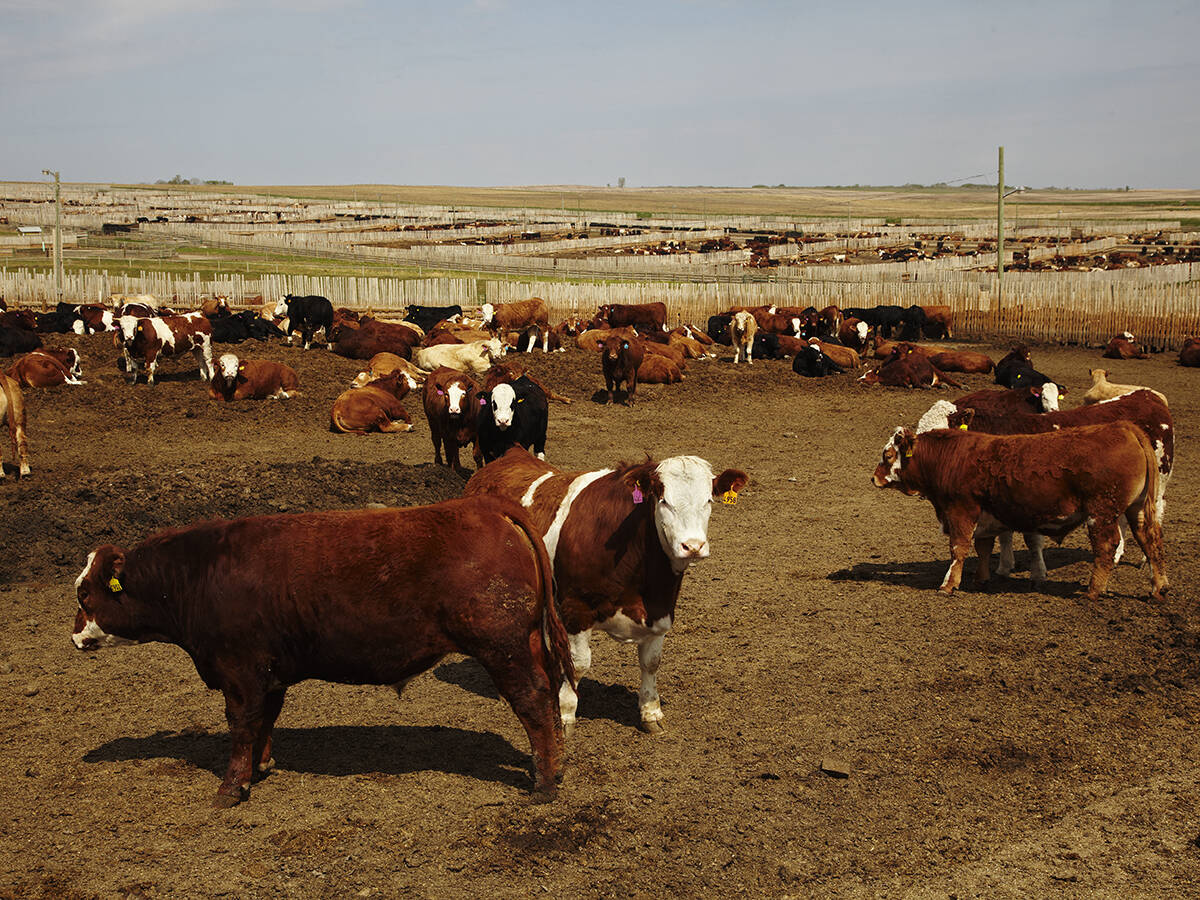This cattle market information is selected from the weekly report from Canfax, a division of the Canadian Cattlemen’s Association. More market information, analysis and statistics are available by becoming a Canfax subscriber by calling 403-275-5110 or at www.canfax.ca.
Fed cattle lower
The fed steer weighted average was $177.31, down $1.80, while heifers were $175, down $3.35.
Dressed sales ranged $296-$298 delivered.
U.S. packer bids were about equal with local bids and were not enough to send cattle south.
Cattle futures were volatile, influenced by the wildly swinging stock market. The loonie swooned and then firmed at the end of the week to dampen the market tone.
Read Also

Canfax cattle market report – September 4, 2025
The Canfax cattle market report for September 4, 2025. Fed & feeder cattle prices, butcher cow trends, and cutout market insights.
The weekly Alberta cash to futures basis narrowed $2 to a seasonally strong -$7.58.
Weekly western Canadian fed slaughter to Jan. 16 was overshadowed by a large non-fed kill.
Weekly exports to Jan. 9 were 4,099 head. Market-ready supplies should tighten modestly.
The colder, snowy weather in the United States could lead to reduced weights, yield and grades, but the support to prices will be offset by limited demand.
Cash trade did not develop in the U.S. Bids were US$128 per hundredweight compared with asking prices of $134-$135. Cash cattle in the U.S. Plains fetched $132-$134 in the previous week.
Cows stronger
Auction volumes have been moderate, but direct sales increased because some cows bought on speculation were priced and committed for delivery.
Western Canadian cow slaughter totalled more than 7,600 head, the most since early December.
D1, D2 cows ranged $105-$116 to average $110.58, up almost $1.
D3 cows ranged $87-$105 to average $97.60.
Rail grade cows were $214-$218.
Butcher bulls rose $4.50 to $134.39, the highest level since late October.
Butcher cows have rallied nine percent since the December lows, while bulls have jumped 13 percent.
Feeder cattle mixed
Light cattle rose, while heavier feeders fell.
Last week, 550-pound steers saw a $37 premium over heifers, the largest steer-heifer price spread ever seen.
Last year, the spread peaked at $34.50 in the last week in January.
With this historically large spread, look for heifers to close some of the gap with steers in coming weeks.
Steers 850 lb. set a high of $226 early this month but have since pulled back $8.50.
January is traditionally not a strong month for heavier feeders. Stronger live cattle futures at the end of last week had little impact on the feeder market as prices trended generally steady.
Bred cows were $1,500-$2,400 a head
Beef lower
The U.S. Choice cutout was US$227.67, down $7.49, and Select was $223.08, down $6.35.
Demand is expected to remain slow, but the storms on the U.S. East Coast may cause supply interruption and affect prices.
Weekly Canadian boxed beef to Jan. 16 was steady to higher with AAA up nine cents at C$305.58 and AA up $6.99 at $307.91.
U.S. cattle on feed
The number of cattle in U.S. feedlots Jan. 1 was 10.626 million, steady with the previous year.
The trade expected a one percent decline
Placements were the surprise, with 1.537 million going into feedlots in December, down one percent from the previous year.
The trade expected a 4.4 percent decline.
Marketings in December were 1.475 million, up four percent.














